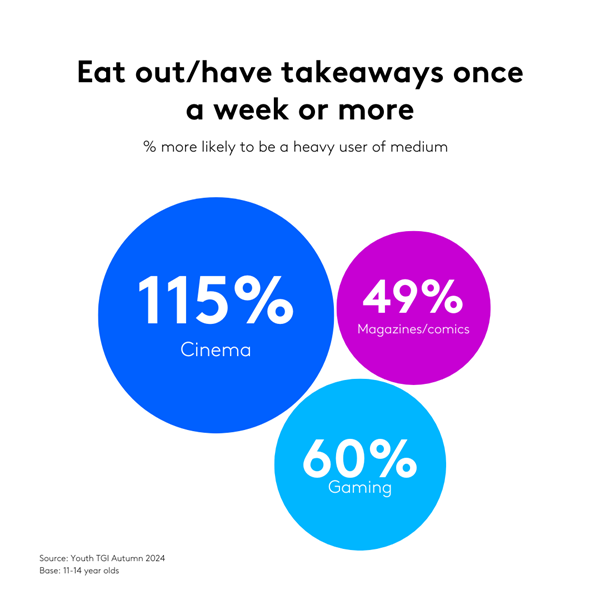Understand trends in the relationship Britain’s young people have today with fast food and takeaways
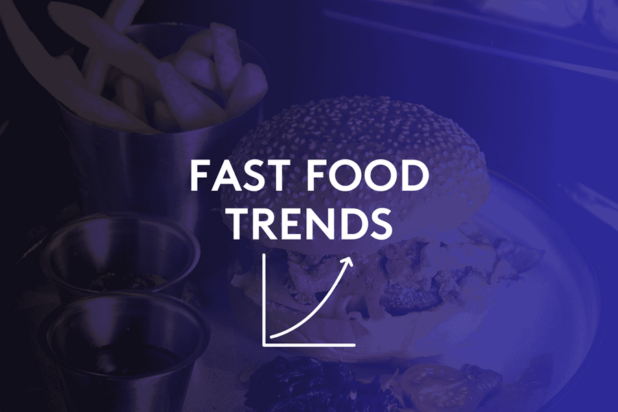
In September this year the government announced the implementation of new rules banning the advertising of junk food on TV before 9pm and entirely online, from October 2025, in order to tackle the issue of childhood obesity.
It’s a move that has divided the media world, with some arguing that it aligns with a broader industry push towards more ethical and sustainable practices, whilst others see it as the wrong way to address a much more fundamental societal issue.
In order to understand what impact the ban might have it is first necessary to understand trends in the relationship Britain’s young people have today with fast food and takeaways.
A trend towards being more healthy
Our Youth TGI survey reveals that in a number of ways, young people are eating more healthily than several years ago. For example, the notion that fast food is all junk is something around a quarter of children and teenagers today agree with, but it has been growing in recent years.
Similarly, the proportion of kids who consider their diet to be very healthy has overall been creeping up.
Such trends suggest that there is a growing awareness of the importance of healthy eating among the young.
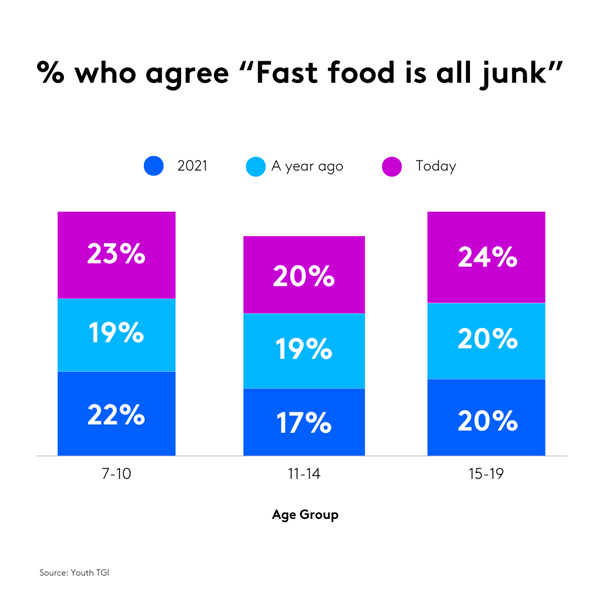
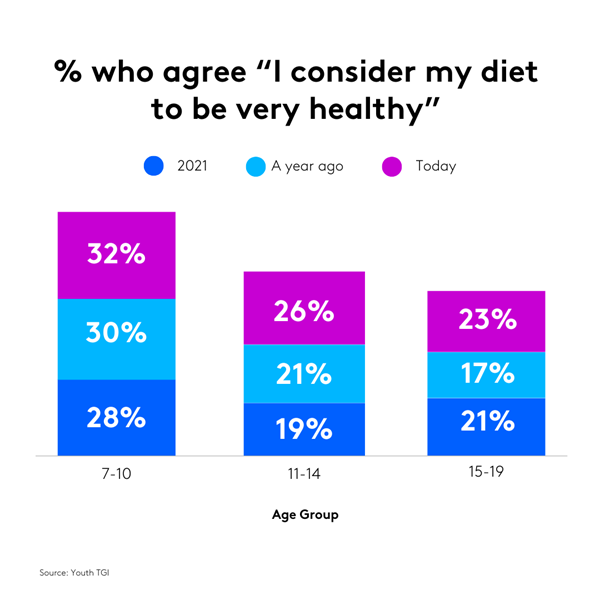
A dip in use of takeaways
If we look at use of takeaways, there is a trend in recent years towards young people using these less. There may be a number of reasons for this, including the cost-of-living crisis forcing people to be more mindful of their spending, as well as the end of the pandemic acting as a prompt to abandon the regular takeaway bought as a treat whilst stuck at home in lockdown.
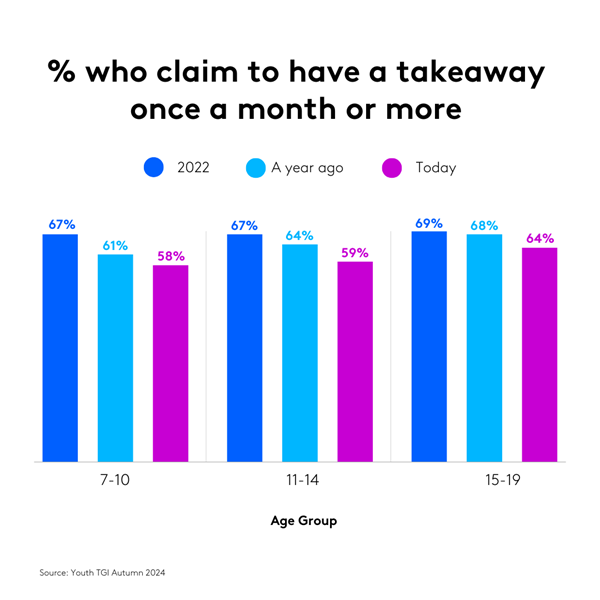
Contrasting those who eat out or have takeaways every week with those who never do so
Youth TGI shows that 20% of 11-14 year olds claim to never have takeaways or meals at restaurants. That’s almost the same proportion of 11-14 year olds at the other end of the scale, claiming to have a takeaway or restaurant meal once a week or more (21%). What differences are there between these two groups at opposite ends of the spectrum in their attitudes to food?
One key difference is their likelihood to prefer vegan and vegetarian food. Those who claim they prefer to eat vegetarian food are 87% more likely than the average 11-14 year old to never eat out or get takeaways. One potential factor driving this may be related to concerns about the variety of vegetarian or vegan options available at restaurants.
Another difference between these two groups is that those who claim not to eat out or get takeaways are particularly likely to have a more forensic engagement with food and what is in it. They are 54% more likely than the average 11-14 year old to say they eat for enjoyment, not because they are hungry, whilst they are also 54% more likely than the average 11-14 year old to say that they prefer to eat food without artificial additives.
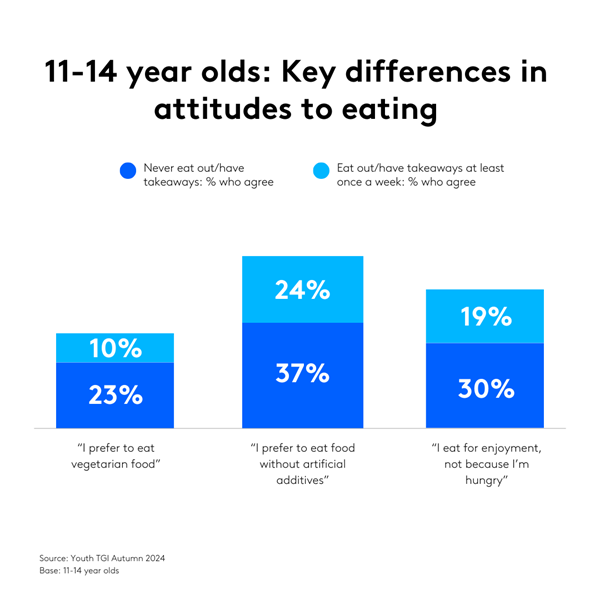
Heavy users of takeaways and restaurants particularly likely to engage with a range of media
These two groups divided by their use of restaurants and eating out also have quite distinct media habits. Those who eat out or get a takeaway once a week or more are particularly likely compared to the average 11-14 year old to be heavy cinema users, gamers and readers of magazines and comics.
By contrast, those who don’t get takeaways or eat out are especially likely to be heavy consumers of radio, internet and online shopping.
